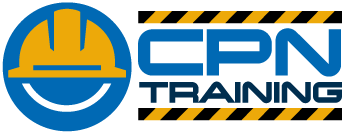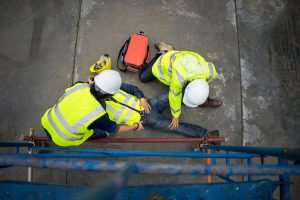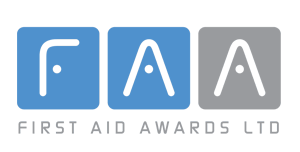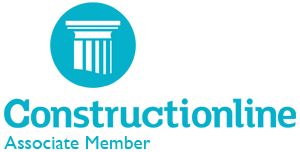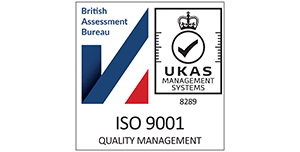Every workplace, whether high-risk or low-risk, must be prepared for medical emergencies. Having a well-structured first aid plan not only ensures compliance with UK law but also fosters a safe and responsible working environment.
Prompt and effective first aid can minimise the severity of injuries, prevent further harm, and in some cases, even save lives.
In the UK, all employers have a legal duty to ensure their workplace is equipped to deal with health emergencies. A comprehensive first aid plan is an essential part of this responsibility.
It involves more than just a stocked first aid box – it includes trained personnel, risk assessments, clear procedures, and regular reviews to keep everything up to date.
Understand Legal Requirements
The Health and Safety (First-Aid) Regulations 1981 lay out the legal obligations for employers in the UK. According to these regulations, employers must provide adequate and appropriate first aid equipment, facilities, and personnel so employees can receive immediate help if they are injured or taken ill at work.
What is deemed ‘adequate and appropriate’ depends on the size and nature of your business.
Even if you are a small business or operate in a low-risk environment, such as an office, you are still legally required to assess first aid needs and put measures in place.
In higher-risk industries like construction or manufacturing, expectations are understandably more rigorous, and more trained staff and specialised equipment may be necessary.
Ignoring these legal requirements not only risks employee safety but can also lead to serious penalties.
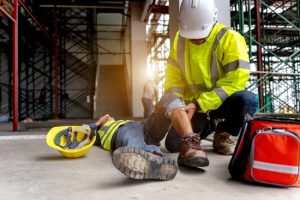
Conduct a First Aid Needs Assessment
A first aid needs assessment is the foundation of your workplace first aid plan. This involves evaluating the types of injuries or illnesses that might occur in your workplace and what resources or personnel would be needed to respond effectively.
For example, if your staff handle chemicals, you may need eye wash stations; if they work alone or off-site, extra provisions may be needed.
Key factors to consider include the size of your workforce, the nature of the work, shift patterns, accident history, and proximity to emergency medical services.
You should also consider employees with particular health concerns or disabilities.
A thorough assessment ensures your first aid provisions are proportionate, practical, and fit for purpose.
Appoint and Train First Aiders
Once your assessment is complete, you must appoint an appropriate number of first aiders. These individuals must undergo proper training through a training provider.
Depending on your workplace’s risk level, you may need first aiders trained in Emergency First Aid at Work (EFAW) or the more comprehensive First Aid at Work (FAW) qualification.
It’s also important to distinguish between a ‘first aider’ and an ‘appointed person’. An appointed person is responsible for calling the emergency services and looking after first aid equipment, but they are not required to have formal training.
In contrast, a first aider is trained to give immediate help. Regular refresher training is crucial to keep their skills sharp and certifications valid.
Stock the Right First Aid Equipment
Every workplace must have at least one clearly labelled and easily accessible first aid kit. The contents should reflect the findings of your first aid needs assessment. For a low-risk office, this might include plasters, bandages, sterile wipes, and gloves.
Higher-risk environments may require burn dressings, foil blankets, or specialised trauma kits.
The location of your first aid kits should be well signed and known to all staff. They should be checked regularly to ensure nothing is missing or expired, and any use of the contents should be recorded.
Keeping your kits clean, up to date, and fully stocked is just as important as having them in the first place.
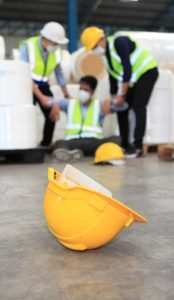
Develop Clear First Aid Procedures
Having trained staff and stocked kits is only part of the solution – you also need clear procedures for responding to incidents.
This includes who to notify, how to report an accident, when to call emergency services, and how to escort someone to the hospital if necessary.
These protocols ensure that everyone knows what to do, even in a stressful situation.
Display these procedures throughout your workplace – in break rooms, near first aid kits, and on notice boards. They should include contact numbers for internal first aiders and external emergency services.
Procedures should also outline how to document incidents, including near misses, which can inform future risk assessments and help prevent recurrence.
Communicate the Plan to All Staff
Even the most detailed first aid plan is ineffective if employees don’t know it exists. Ensure that all staff, especially new starters, are made aware of your first aid arrangements during their induction.
It’s good practice to go over the location of kits, names of trained first aiders, and what to do in an emergency.
Regular reminders, emails, or toolbox talks can help reinforce awareness. You might also consider conducting occasional drills or walk-throughs of emergency procedures.
Clear signage throughout the workplace also plays an important role in making sure everyone knows where help is and how to get it quickly.
Review and Update the Plan Regularly
A first aid plan is not something you create once and forget about. You should review your plan at least annually, or sooner if there are significant changes in staff numbers, workplace layout, operations, or after a serious incident.
Regular reviews help ensure that the plan remains relevant and effective.
Involve your appointed first aiders and health and safety representatives in the review process. They can provide valuable feedback based on their experiences and observations.
Keep a record of all reviews and any updates made – this not only helps with accountability but also shows due diligence if ever scrutinised by health and safety inspectors.

Conclusion
Creating a first aid plan is about more than just ticking a box. It’s about protecting your team, showing responsibility as an employer, and meeting your legal obligations.
By taking a structured approach – from assessment through to training, communication, and review – you can ensure your workplace is prepared for the unexpected.
If you’re unsure where to start, working with a professional training provider can help guide you through the process and ensure your team is fully trained and equipped.
A little preparation today could make all the difference in a critical moment tomorrow.
